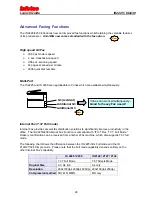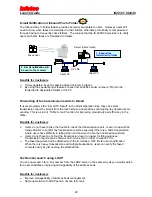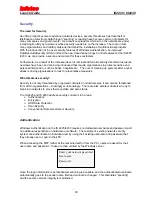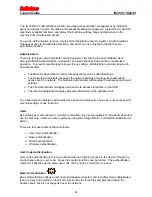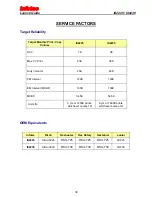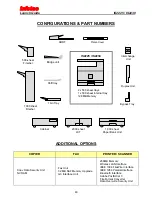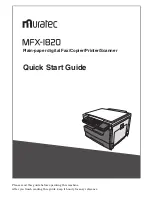
Launch Guide
IS2225 / IS2230
34
Infotec
The IS 2225/30’s authentication function provides access limitation management by individual
users and groups of users. By utilising this access limitation management, customers can limit the
machine’s available functions, and protect the machine settings, files and data stored in the
machine from unauthorised access.
To use the Authentication function, Users and Administrators need to register. An Administrator
manages access to the allocated functions, and Users can use only the functions they are
permitted to access.
Administrators
There are four types of Administrator, and a Supervisor. By sharing the administrative work
amongst different administrators, customers can spread the workload and limit unauthorised
operation. To prevent unauthorised changes to any settings, Administrators are also required to
be authenticated.
¾
The Machine Administrator mainly manages the machine’s default settings.
¾
The Network Administrator manages the network settings and prevents unauthorised
access over the network. The Network Administrator will manage IP addresses and e-mail
settings.
¾
The File Administrator manages permissions to access stored files on the HDD
¾
The User Administrator manages personal information in the address book.
The Supervisor can delete an administrator’s password and specify a new one, but cannot specify
machine settings or use functions.
Users
By enabling user authentication, customers can allow only people registered in the address book to
use the machine. Users can also register by using Web Image Monitor or SmartDeviceMonitor for
Admin.
There are four user authentication methods:
¾
User Code Authentication
¾
Basic
Authentication
¾
LDAP
Authentication
¾
Windows
Authentication
User Code Authentication
User code authentication is the conventional method of gaining access to the device through the
control panel using a user code. Access to specific functions can be limited. This authentication
method is ineffective as the same user code can be used by more than one user.
Basic Authentication
Basic authentication utilises a user name and password system and is slightly more sophisticated
than the User Code method in that it can limit access to stored files and personal data in the
address book, but it is not supported over the network.
New







